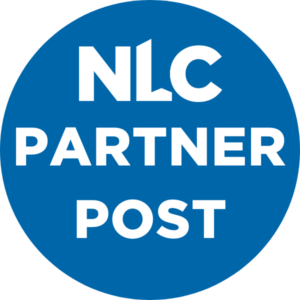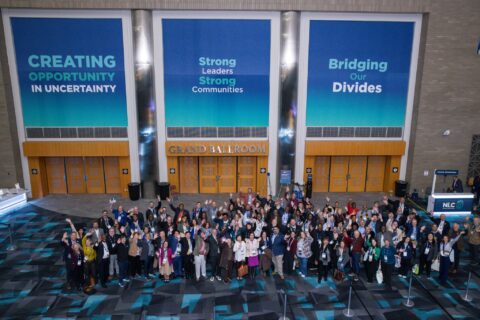This blog was coauthored by Amelia Coffey, Senior Research Associate and Heather Hahn, Associate Vice President of Urban Institute.
Public benefits such as the Supplemental Nutrition Assistance Program (SNAP) and Medicaid can provide vital support for young adults while training is underway, wages are relatively low and families are just getting started. Such benefits also help the millions of young people nationwide who cycle in and out of work and education, known as Opportunity Youth. By contrast, loss of benefits leading to food insecurity and limited access to health care can slow or stop momentum toward careers and essential educational credentials, with downstream effects on families, neighborhoods and tax bases.
The recent signing into law of the One Big Beautiful Bill Act (OBBBA) portends $279 billion in cuts to the SNAP and nearly $1 trillion in cuts to Medicaid. OBBBA leaves the nearly 3 million young adults ages 18 to 24 who receive SNAP vulnerable to losing that assistance, and the roughly 3 in 10 young adults ages 18 to 24 insured through Medicaid vulnerable to losing coverage if cuts begin as planned in 2027.
Many of the act’s changes target the Medicaid expansion population. Because Medicaid expansion in the last few years has extended health coverage to many more young adults (PDF), the changes will likely have a disproportionate effect. In addition, young adults have the highest uninsurance rate of any age group (about 11 percent) and the lowest rates of employer-provided health insurance.
Roles for Cities and City Leaders
Whereas most cities, towns and villages do not control food and health benefit programs directly, they play key roles in supporting food and health care access, and will likely serve as sources of more direct advice and even support as Federal-source benefits diminish.
Indeed, through a national scan, NLC has found that cities, towns and villages, regardless of size, play essential roles in supporting resident awareness of and access to federal and state benefit programs. The scan found that benefits awareness and access programs make up some of the longest-running programming among municipal efforts to support the financial well-being of residents (67 percent of respondents noted their municipalities started doing this more than ten years ago).
Take Action
As cuts take effect, city leaders have opportunities to bridge gaps and build stronger systems for the long term through means such as:
- Understand how young adults gain access to and use benefits through data and listening: Connect with youth-serving organizations, alternative schools and the like to convene young people who utilize SNAP and Medicaid to understand current patterns of access and use, and effects on families.
- Deploy city resources and facilities to ease access: The sites and staff of community centers, libraries, parks and City Hall itself can, with coordination and training, serve as sources of information. In addition, the city can take on the role of ensuring accurate and plentiful provision of information on benefits by youth-serving organizations, school districts, workforce boards, hospitals and clinics, or can ensure that a local nonprofit serves as lead coordinator.
- Expand opportunities for volunteering/service to fulfill work requirements: Cities can charter and sometimes supervise volunteer activities for community benefit in ways that would help young adults meet requirements.
- Establish priorities and set goals: Mayors and other city officials can declare and publicize young adult benefits access as a city priority, and set and monitor goals around maintaining high rates of access. This can occur in coordination with county and state officials for a more powerful coordinated messaging effort.
- Contribute to streamlining documentation: Cities may join states in streamlining the process for documenting compliance with work-reporting requirements — particularly for people with unstable or complex work arrangements.
How Could Impending Benefit Cuts Affect Young Adults?
Close analysis reveals several potential effects of benefit cuts for young adults. These represent some of the effects to know about.
Expanding work-reporting requirements could disproportionately reduce SNAP and Medicaid access for young adults. Research shows young adults can have difficulty (PDF) meeting work requirements because of unstable and variable work hours and facing acute challenges navigating the bureaucratic process of reporting their work. An Urban Institute analysis estimates that nearly 700,000 young adults would lose some or all of their SNAP benefits each month because of the OBBBA’s work requirement expansion. Because young adults are more likely to be students and face challenges achieving stable employment, they are particularly vulnerable to losing Medicaid coverage under the new 80-hour per month work or volunteering requirements.
Shifting program costs to states will likely force cuts to SNAP benefits. OBBBA shifts SNAP program costs to states, which will likely lead to additional reductions in eligibility and benefits, leaving more young adults facing greater poverty and food insecurity. One Urban Institute analysis (PDF) estimates that a 10 percent cost share for states would leave 900,000 more people in poverty because of expected SNAP cuts. The young adult share (PDF) of that figure: 56,000.
Increasing application and other paperwork requirements could make it difficult for young adults to apply for and maintain Medicaid coverage. Beginning in January 2027, states will be required to conduct eligibility checks for people covered under the Medicaid expansion every 6 months — up from the 12 months currently required. Research shows young adults struggle more than older adults to navigate bureaucracy and are also more likely to move than older adults, which could place them at risk of not receiving renewal notifications sent to outdated addresses.
Effects Beyond Young Adults
The vulnerability to losing access to benefits and meeting work requirements is not limited to young adults. It can also affect other groups with unstable employment, caregiving responsibilities and health needs such as older adults, immigrants and persons reentering from incarceration. Cities have an opportunity to take the lead in strengthening systems that ensure supports for residents at multiple ages and stages, and learning from the experience with particular groups to inform service strategies for others.
Upcoming Webinar
To learn more, attend the webinar on Oct. 28: “How States, Counties and Cities Can Help Young Adults Access Medicaid and SNAP.” Join the Urban Institute for this meeting of state, county and city officials that will provide an overview of key policy changes and an opportunity for staff across all levels of government to discuss promising approaches and ideas for furthering young adults’ program access.












